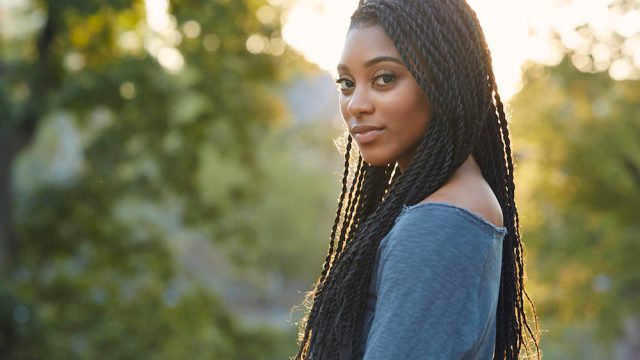Have you overly gotten a fresh set of braids, a new wig, or sew-in weave and felt so cute–only to have your throne finger like it’s psoriasis with ants the next day?
Protective styles help you squint stylish and requite you a unravel from the daily manipulation that can forfeiture your hair. But the tension, limited wangle to your scalp, and strained hair can rationalization scalp issues that leave you drastic for relief.
However, there are measures you can take to alimony a healthy scalp and make your protective style finger increasingly comfortable. In this vendible I will share 4 tips on how to relieve an itchy scalp while rocking protective styles
1. Prep Your Hair For Your Protective Style
Before you get braids, a wig, or a weave, you need to properly prepare your hair and scalp for the style. You should cleanse your scalp thoroughly with a clarifying shampoo. You can plane exfoliate your scalp to remove sufferer skin cells. This will remove any dirt and buildup that could slow hair growth and rationalization irritation and itchiness once your style is installed.
In wing to cleansing your hair and scalp, be sure to wipe the hair you will be using for your protective style. Make sure to wash your human hair bundles beforehand.
Synthetic hair that is used for most braid, twist, and crochet styles is often coated in chemicals and based in alkaline. This is meant to prevent mold, but it can rationalization scalp irritation and itchiness. To fix this, try an Apple Cider Vinegar rinse. Here’s how:
-
Find something to soak the hair in. This can be a sink, a tub, or plane a bucket. Use whatever is misogynist to you. You may want to use something like weights to help weight the hair lanugo and alimony it under the water.
-
Fill your container with water and add well-nigh a cup of Apple Cider Vinegar. Exact measurements are necessary–just be sure not to overdo it!
-
Place the hair in the water and let it soak for 15-20 minutes. Without the time is up, a white mucosa will towards at the top of the water indicating that the alkaline has been lifted from the hair.
-
Remove the hair and phlebotomize the water. Rinse the hair with wipe water to be sure everything is removed.
-
Hang the hair to dry.

2. Use Products With The Right Ingredients
If your scalp gets itchy without your protective style is installed, you can wield a scalp spray, or use an oil like our VoiceOfHair PureFix Hair Elixir to soothe the itch.
You should squint for an oil that contains natural ingredients like peppermint–which offers a cooling sensation and stimulates growth. Neem Oil and Rosemary Oil are moreover essential considering they have antimicrobial properties that stop the growth of slime on the scalp.
3. Avoid Using Heavy, Petroleum Based Products Like Grease and Whet Control
Edge tenancy can be useful in laying your victual hairs but you should never apply it all over your scalp to make your braids squint neater.
Heavy products like petroleum and whet tenancy are too thick to penetrate the hair follicle. Instead, they sit on top of it. This can rationalization major issues. For one thing– it will prevent air and moisture from reaching your hair follicles, which will slow lanugo your hair growth.
It can moreover rationalization buildup that can irritate your scalp and rationalization serious issues like dandruff and plane hair loss. If your braids are looking fuzzy but you’re not quite ready to take them out, try an updo or rocking a scarf/hat instead.
4. Don’t Leave Your Style In For Too Long
Leaving your protective style in for longer than 2-3 months is not recommended.
Over time, the hair can wilt matted and uncork to lock. Also, the weight of the widow hair can pull on your soft-hued roots and rationalization thinning, scalp irritation, and hair loss.
It’s ok to get your money’s worth out of a style, but not at the expense of you scalp.
5. Take A Break

We all love a good protective style. But it’s important to love your natural hair more. Be sure to take breaks between rocking protective styles.
Alternate weave styles, wigs, weaves, and crochet, with loose, low manipulation styles that don’t put a lot of tension on your scalp.
This will requite your scalp a endangerment to outbreathe and recover, and can help prevent itching and irritation.
The Bottom Line
Protective styles should be fun, convenient, and empowering. What they shouldn’t be is itchy. If you follow these tips to alimony your scalp clean, self-ruling of buildup, and well moisturized, you can take the itch out of protective styles for good.
